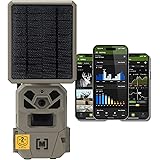Mastering Safe Wood Splitting: Protecting Your Folding Knife in Survival Situations
Many outdoor enthusiasts, especially those new to wilderness skills, often encounter misleading advice regarding tool use. The video above highlights a critical mistake frequently observed in various online content: using a folding knife to split wood. This seemingly efficient technique, known as batoning, carries significant risks, particularly when applied incorrectly to unsuitable tools. Learning proper wood processing methods is essential for anyone venturing into the outdoors, safeguarding both your gear and your well-being in a challenging environment.
Ignoring proper technique can quickly lead to a broken blade, a damaged handle, or even a serious injury during a survival situation. Understanding the limitations of your equipment and embracing alternative, safer strategies for wood splitting is paramount. This article will delve into why certain practices are dangerous and provide comprehensive, practical guidance on effective and safe wood preparation techniques. Our focus remains on preserving your essential tools, ensuring they are always ready when you truly need them most.
The Peril of Batoning with a Folding Knife
Attempting to baton wood with a folding knife is a dangerous practice that jeopardizes the integrity of the tool itself. Unlike robust fixed-blade knives, folding knives possess multiple moving parts and a critical pivot joint. This inherent design weakness means the joint cannot withstand the intense lateral and torsional forces generated during batoning activities. Such stress can cause the blade to twist or the locking mechanism to fail unexpectedly.
When you strike the spine of a folding knife with another piece of wood, the pressure is unevenly distributed across the blade and its locking mechanism. This forceful impact is likely to deform the pivot pin, compromise the lock, or even snap the blade entirely at its weakest point. A damaged or broken folding knife effectively renders a crucial survival tool useless, potentially leaving you in a vulnerable position. Preserving your gear through proper knife safety practices is always a wise decision.
Even robust folding knife designs, such as those with stout liner locks or frame locks, are not engineered for the brute force required for batoning. These mechanisms, while strong for typical cutting tasks, are not designed to absorb repetitive impact from wood splitting. Consequently, the internal components can wear down prematurely or suffer catastrophic failure under such stress. Recognizing these limitations is a fundamental aspect of responsible tool use in any wilderness preparedness scenario.
Understanding Batoning: When and How (Safely)
Batoning is a legitimate and effective wood splitting technique, but it must be performed with the correct tools. This method involves using a sturdy, fixed-blade knife and striking its spine with a baton (another piece of wood) to drive the blade through timber. The key distinction lies in the knife’s construction: a true batoning knife must have a full tang, meaning the blade material extends continuously through the entire handle. This design provides unparalleled strength and prevents the blade from separating from the handle.
A high-quality fixed-blade survival knife, typically with a blade thickness of 3/16 inch or more, is an appropriate tool for batoning. These knives feature robust construction, lacking any hinges or locking mechanisms that could fail under pressure. Furthermore, the spine of such a knife is often flat and thick, providing a suitable surface for striking with a baton. Employing the correct type of knife for wood splitting ensures both efficiency and safety in the field.
Even with the right knife, careful consideration must be given to the wood being split. Select pieces that are free of knots and are not excessively thick. Position the knife blade strategically on the log, and use controlled, deliberate strikes with your baton. This methodical approach minimizes strain on your survival knife and maximizes your effectiveness. Mastering these outdoor skills contributes significantly to overall wilderness preparedness.
Superior Wood Splitting Techniques for Survival
Fortunately, numerous safer and more effective methods exist for processing wood in a survival situation without risking your folding knife. The video briefly introduces a couple of these clever alternatives. By adopting these bushcraft skills, you can efficiently prepare firewood and kindling while preserving the integrity of your essential tools. These techniques are particularly beneficial for anyone prioritizing gear maintenance and long-term utility in the wild.
Angling the Blade for Smaller Tasks
When dealing with smaller pieces of wood or kindling, applying leverage by angling your folding knife blade can be effective. Instead of striking the spine, position the blade diagonally across the small piece of wood. Then, apply downward pressure and gently rock the blade from side to side, allowing the knife’s geometry to wedge the wood apart. This method minimizes direct impact on the locking mechanism and utilizes the cutting edge more efficiently for precise wood splitting. It is a subtle but important distinction in safe tool use.
This technique is best suited for slender sticks or small branches, not for substantial logs. It focuses on controlled slicing and wedging actions rather than brute force. By minimizing the pressure on the knife’s joint, you significantly reduce the risk of damage. Remember, the goal is to work smarter, not harder, especially when your survival knife is a critical piece of gear in your outdoor kit.
Crafting a Primitive Wood Wedge
As demonstrated in the video, sharpening a stick into a wedge is an incredibly versatile and safe alternative for splitting larger pieces of wood. Find a sturdy piece of hardwood, approximately the size of your forearm, and use your folding knife to sharpen one end into a blunt wedge shape. This creates a natural tool specifically designed for breaking apart logs without putting any strain on your knife’s delicate mechanisms. This bushcraft skill is invaluable for sustainable tool use.
Once your wooden wedge is prepared, position it onto the end grain of the log you wish to split. Then, use another heavy piece of wood or a rock as a hammer to strike the blunt end of the wedge, driving it into the log. This method effectively transfers all the splitting force to the disposable wooden wedge, completely bypassing your valuable survival knife. It is an ancient, reliable technique that prioritizes tool preservation and resourcefulness in the wild, ensuring your knife remains sharp and intact for other critical tasks.
Other Practical Wood Processing Methods
Beyond these specific techniques, several other strategies contribute to effective wood splitting and fire preparation:
- <p>Finding Natural Splits: Often, logs in the wild already possess natural cracks or splits. Capitalize on these weaknesses by inserting your wooden wedge or even a sturdy stick into these fissures and leveraging them apart. This reduces the effort required and protects your tools from unnecessary strain.</p>
- <p>Using a Hatchet or Axe: If available, a dedicated cutting tool like a hatchet or a small axe is unequivocally the best choice for splitting wood. These tools are specifically designed for chopping and splitting, offering superior efficiency and safety. They are engineered to handle the impact and leverage required for substantial wood processing tasks.</p>
- <p>Leverage Points and Rocks: For smaller kindling, strategically placing a stick over a rock or a raised root can create a leverage point. You can then apply downward pressure to snap the stick, often with minimal effort. This preserves your knife’s edge and eliminates the need for forceful splitting, focusing instead on clever manipulation of your environment.</p>
By integrating these various methods into your outdoor skills repertoire, you become a more capable and prepared individual. Each technique offers a unique advantage, allowing you to adapt your approach based on the resources at hand and the specific demands of your survival situation. Smart tool use is a hallmark of an experienced outdoor practitioner.
The Importance of Tool Preservation in the Wild
In any survival situation, your tools are your lifeline; a broken tool can rapidly escalate a minor inconvenience into a serious threat. A folding knife, while incredibly versatile for tasks like cutting cordage, opening packages, or preparing food, is not a dedicated wood-splitting implement. Pushing it beyond its design limitations not only risks its destruction but also jeopardizes your ability to perform other essential tasks. Thoughtful knife care directly impacts your safety and success.
Imagine being deep in the wilderness with a broken folding knife, suddenly unable to perform critical functions such as making feather sticks for fire starting or cutting material for shelter construction. The consequences of such an oversight can be severe, highlighting the critical importance of proper tool use. By understanding and respecting the capabilities of each piece of gear, you ensure its longevity and reliability when you need it most, enhancing your overall wilderness preparedness.
The lesson from the video and this extended discussion is clear: never compromise the integrity of your survival knife through improper wood splitting techniques. Prioritize understanding your tools, learning appropriate methods for each task, and always thinking ahead about preservation. This disciplined approach ensures that your essential gear, including your trusty folding knife, remains in peak condition, ready to serve you reliably throughout any outdoor adventure or unexpected survival situation.











